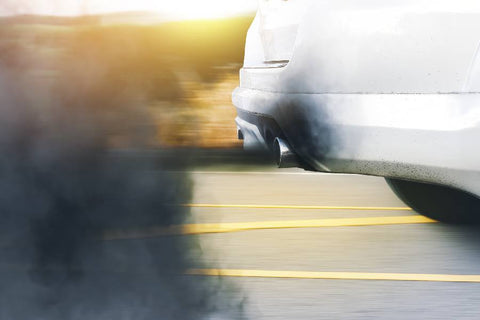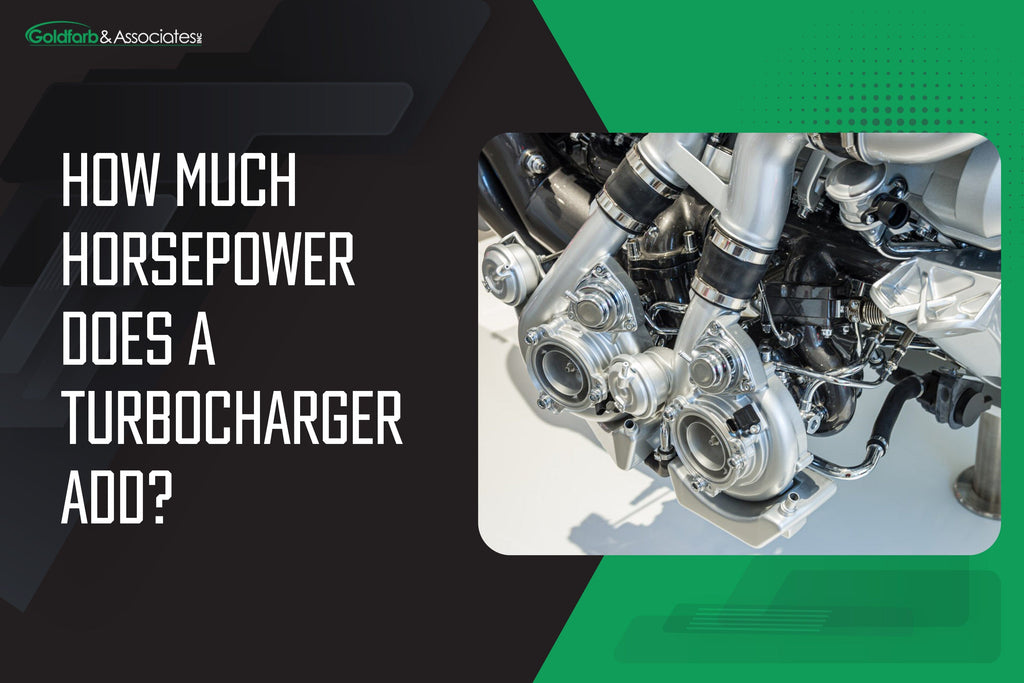Turbochargers are a valuable asset for enhancing torque output and fuel efficiency. Diesel engines, in particular, benefit from the device as it supplies denser air to aid with the compression. How much horsepower does a turbocharger add? It depends on various factors, but the impact is rarely negligible.
Turbos have been around for decades, and ever since their mass adoption, their usage has been growing steadily. Implementing better fuel economy and reduced emissions has recently broadened the use case for a turbocharger.
So, the article will discuss the amount of help the motor gets from a turbocharger in various scenarios.

How Much Horsepower Does a Turbocharger Add?
You have to consider several factors when determining the power gain from turbocharger use in a motor.
A turbocharger may typically increase an engine's horsepower by anywhere between 40 and 300 horsepower.
However, the exact number is difficult to tell as the quality of collaboration of different parts always influences the overall improvement.
Still, by considering these factors, we may get to a number that’s in the vicinity of the actual impact.
Here are the factors that influence how much HP does a turbo for sale add:
Turbocharger size
Smaller turbos tend to spool up quickly, which makes them good for delivering a boost at lower RPMs. This is advantageous for achieving instant throttle response, and it’s more utilized in petrol engines.
The larger the turbo, the more airflow it can create and boost the pressure in the combustion process. In short, a bigger turbocharger size means greater power gains.
In horsepower terms, a bigger turbocharger has a greater capacity to increase the engine’s horsepower as it can burn more fuel. The increase in HP from a bigger turbo can go over 30% above the engine’s basic output.
Turbocharger design
Along with the size, the turbocharger design is one of the biggest factors influencing the engine’s HP. Turbocharger dealers claim different turbo
designs deliver varying levels of performance and efficiency. High-performance turbos can deliver increased air pressure and consequently boost the pressure in the combustion chamber.
If a component like a compressor or a turbine mismatches relative to the demands of the other components, the turbocharger will have a limited airflow.
A smaller compressor will struggle to provide sufficient air intake to match the capacity of a larger turbine. That the turbine is capable of handling a greater volume of exhaust gases will make no difference, and the airflow will still be limited.
That’s why the components need to be compatible with each other’s capacities and have matching performances.
Boost pressure limitations of the engine
The turbocharger may well be able to boost the engine’s power output, but the engine may not possess the capacity to handle it.
The engine’s design and components can limit its capacity to receive added power. At the very least, having such limitations can put it in danger of breaking down.
Here are the factors to consider when discussing the engine’s limitations to withstand additional HP from the turbocharger:
Quality of components
Pistons, connecting rods, cylinder heads, etc., need to endure the increased stress that comes with higher boost pressures. Boosting the engine beyond its capacity to withstand the added horsepower can lead to failure.
Tuning
The ECU is responsible for managing various parameters like the air-fuel mixture and timing. Having suboptimal tuning will limit the engine’s capacity to accept the added boost, but it can also work under more stress than intended.
When it comes to boosting pressure, tuning helps establish safe and effective limits for the engine.
Fuel quality
Using fuel that’s of lower octane than the recommended ratings can lead to pre-ignition and, consequently, engine damage. Pre-ignition is an occurrence in petrol engines, and it means that the air-fuel mixture had ignited prior to the occurrence of the ignition spark.
This malfunction can happen because of high temperatures, pressures, or hot spots in the combustion chamber. Low-octane fuel and suboptimal timing can also contribute to pre-ignition.

Engine displacement
When it comes to the amount of impact on the engine’s horsepower, what also matters is the size of the engine. A smaller engine will experience larger power gains compared to other engines.
Engine displacement refers to the total volume that all the cylinders can sweep in a single motion. Larger displacement engines allow for more fuel to be mixed with compressed air, and as a result, they produce more power.
When it comes to turbochargers, smaller displacement engines get a bigger boost because their power output is small. Technological advances, especially those related to turbochargers, have enabled weaker engines to produce a significant amount of power without sacrificing the vehicle's economy.
Intercooling
The intercooling process enhances the efficiency and, with that, the engine's power output. Its main function is to ensure that the air-fuel mixture is denser and contains more oxygen molecules. This is made possible through a cooling process that removes the heat that’s generated during the compression of the intake air from the environment.
As devices, intercoolers are located between the compressor and the engine’s intake manifold. They’re not an inherent part of the turbocharger, nor are they directly integrated with the engine, but rather, it’s a component that helps the process.
The turbocharger compresses the air, but the high heat means that it’s difficult to maintain its density. A good intercooling system will improve the density and increase oxygen levels in the compressed mixture. This means that the combustion process will be made easier and with increased power, leading to a higher horsepower output.
Exhaust flow
The flow of exhaust gases is critical to how both the engine and the turbocharger will perform. The turbocharger utilizes exhaust gases to propel power its function, and that’s why the interaction between the exhaust flow and the turbocharger is important.
The turbocharger’s work will not be your primary concern if there’s a problem with the exhaust flow system.
However, small leaks or restrictions can limit the turbo’s efficiency and overall engine performance. That’s how the exhaust flow is important in maintaining a functioning combustion process.

Summary
The turbocharger increases the amount of horsepower the engine is able to produce, but several factors influence the extent of its production. So, how much horsepower does a turbocharger add?
Depending on the turbocharger’s size and design, it can contribute to the engine's power output. The boost pressure limitations of the engine also contribute to the level of horsepower enhancement with turbo.
The quality of the engine’s components, the tuning optimization, and the fuel quality may be lacking for the amount of power that the turbo is supplying the engine. Consequently, the engine might suffer damage, or it can get broken down.
Finally, the engine displacement, the intercooling system, and the exhaust flow influence the turbocharger horsepower increase.
Considering all of these factors as a synergic group may give you an approximate number of horsepower a turbocharger adds.



